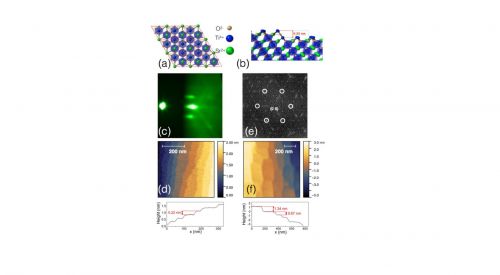Polar surfaces are known to be unstable due to the divergence of the surface electrostatic energy. Here we report on the experimental determination, by grazing incidence x-ray diffraction, of the surface structure of polar Ti-terminated (111) SrTiO3 single crystals. We find that the polar instability of the 1×1 surface is solved by a pure electronic reconstruction mechanism, which induces out-of-plane ionic displacements typical of the polar response of SrTiO3 layers to an electron confining potential. On the other hand, the surface instability can be also eliminated by a structural reconstruction driven by a change in the surface stoichiometry, which induces a variety of 3×3 (111) SrTiO3 surfaces consisting in an incomplete Ti (surface)–O2 (subsurface) layer covering the 1×1 Ti-terminated (111) SrTiO3 truncated crystal. In both cases, the TiO6 octahedra are characterized by trigonal distortions affecting the structural and the electronic symmetry of several unit cells from the surface. These findings show that the stabilization of the polar (111) SrTiO3 surface can lead to the formation of quasi-two-dimensional electron systems characterized by radically different ground states which depend on the surface reconstructions.


